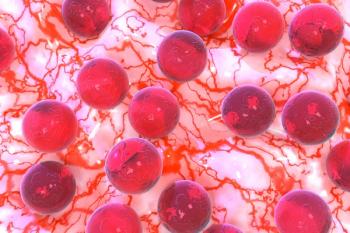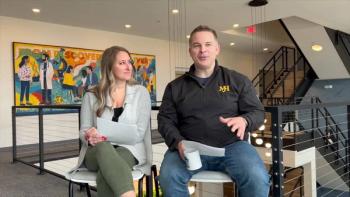
Second-Gen TKIs Better in CML Patients With Elevated CIP2A Levels
CML patients with high CIP2A levels treated with second-generation tyrosine kinase inhibitors have better outcomes than those treated with imatinib.
Chronic myeloid leukemia (CML) patients with high CIP2A levels treated with second-generation tyrosine kinase inhibitors (TKIs) have better outcomes than those treated with imatinib, according to a new study. High CIP2A has been shown to be a risk factor for progression with imatinib in past studies.
“We have previously shown that patients with a high CIP2A protein level at diagnosis and treated with imatinib have a 100% actuarial risk of progressing to [blast crisis],” wrote study authors led by Richard E. Clark, MD, of the University of Liverpool in the United Kingdom. “However, the second-generation TKIs dasatinib and nilotinib are now increasingly used for first-line CML treatment and both drugs may have superior clinical outcomes compared to imatinib.”
In the new study, researchers enrolled 74 total patients with CML; 52 (70%) were defined as “low” CIP2A status (< 7.3 mean fluorescence intensity [MFI]), and 22 (30%) were “high” (> 7.3 MFI). In the imatinib group, 33 patients (75%) were low and 11 (25%) were high, and in the second-generation TKI group, 21 patients (70%) were low and 9 patients (30%) were high. Results were
The only patients that progressed at 24 months were high CIP2A patients treated with imatinib. The progression-free survival probability at 24 months was 41% in those patients, compared with 100% in all other groups (P < .001), including the high CIP2A patients treated with dasatinib or nilotinib. All progression occurred within 32 months of the initial diagnosis, and the median time to progression was 12.5 months.
An early molecular response is a good predictor of clinical outcome in CML. Of the low CIP2A imatinib-treated patients, 55% achieved an early molecular response, compared with only 9% of the high CIP2A patients treated with imatinib (P = .01). In the second-generation TKI group, 90% of low CIP2A patients and 44% of high CIP2A patients achieved an early molecular response.
The study also found that the transcription factor E2F1 is elevated in high CIP2A patients, and that 1 month of a second-generation TKI treatment suppresses E2F1 and lowers CIP2A levels. That effect is not seen with imatinib.
“A patient with a high diagnostic CIP2A level is far less likely to progress to [blast crisis] if treated with a second-generation TKI from original diagnosis, because the second-generation TKIs modulate the CIP2A/c-Myc/E2F1 pathway,” the authors concluded. “Overall, these data suggest that if a patient has a high CIP2A level at diagnosis then they should not be treated with imatinib due to the high risk of disease progression; these patients should be offered either dasatinib or nilotinib upfront.”
Newsletter
Stay up to date on recent advances in the multidisciplinary approach to cancer.

















































































